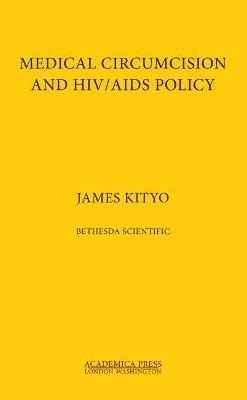
Medical Circumcision and HIV/AIDS Policy
Seiten
2019
Academica Press (Verlag)
978-1-68053-485-6 (ISBN)
Academica Press (Verlag)
978-1-68053-485-6 (ISBN)
Reviews sexual reproductive health policies and practices, and literature on medical circumcision, and identifies existing opportunities and challenges. James Kityo's pioneering book also explores the medical, gender, ethical, socio-economic, and human rights dimensions of medical circumcision as an HIV/AIDS prevention method.
Since the first randomized controlled studies were conducted on medical circumcision to assess their effectiveness on reducing HIV transmission, health systems have made considerable progress in adopting this practice in their HIV/AIDS and sexual reproductive health policies. As such, medical circumcision is being adopted as an additional intervention measure to support previous practices for reducing HIV infections in various countries or settings.
James Kityo’s pioneering book examines contexts, processes, policy projections, and likely engagements by reviewing sexual reproductive health policies or practices, and literature on medical circumcision, and identifies existing opportunities and challenges. His book also explores the medical, gender, ethical, socio-economic, and human rights dimensions of medical circumcision as an HIV/AIDS prevention method.
Following peer-reviewed studies, Kityo found compelling evidence documenting the effectiveness of medical circumcision in reducing HIV transmission, and discusses this evidence in the context of HIV/AIDS in a developing health system in Sub-Saharan Africa. The author concludes that there is a range of opportunities from research and current practice to enable policy makers to adopt medical circumcision and other interventions at their disposal in order to reduce infections from HIV and AIDS-related deaths. The author suggests feasible recommendations for implementing successful HIV/AIDS prevention programs in developing nations’ health systems, including medical circumcision’s gradual inclusion in health practices; stakeholder support; an elaborate review of this intervention by women, politicians, religious communities, and funding agencies. The author introduces a guided action plan, which can be used as a launch pad to enhance the learning process in the integration of medical circumcision in existing health practices.
Since the first randomized controlled studies were conducted on medical circumcision to assess their effectiveness on reducing HIV transmission, health systems have made considerable progress in adopting this practice in their HIV/AIDS and sexual reproductive health policies. As such, medical circumcision is being adopted as an additional intervention measure to support previous practices for reducing HIV infections in various countries or settings.
James Kityo’s pioneering book examines contexts, processes, policy projections, and likely engagements by reviewing sexual reproductive health policies or practices, and literature on medical circumcision, and identifies existing opportunities and challenges. His book also explores the medical, gender, ethical, socio-economic, and human rights dimensions of medical circumcision as an HIV/AIDS prevention method.
Following peer-reviewed studies, Kityo found compelling evidence documenting the effectiveness of medical circumcision in reducing HIV transmission, and discusses this evidence in the context of HIV/AIDS in a developing health system in Sub-Saharan Africa. The author concludes that there is a range of opportunities from research and current practice to enable policy makers to adopt medical circumcision and other interventions at their disposal in order to reduce infections from HIV and AIDS-related deaths. The author suggests feasible recommendations for implementing successful HIV/AIDS prevention programs in developing nations’ health systems, including medical circumcision’s gradual inclusion in health practices; stakeholder support; an elaborate review of this intervention by women, politicians, religious communities, and funding agencies. The author introduces a guided action plan, which can be used as a launch pad to enhance the learning process in the integration of medical circumcision in existing health practices.
James Kityo, Health Policy Consultant, University of Leeds.
| Erscheinungsdatum | 07.10.2019 |
|---|---|
| Verlagsort | Bethesda |
| Sprache | englisch |
| Maße | 152 x 229 mm |
| Themenwelt | Medizin / Pharmazie ► Medizinische Fachgebiete ► Urologie |
| Studium ► 1. Studienabschnitt (Vorklinik) ► Med. Psychologie / Soziologie | |
| Studium ► Querschnittsbereiche ► Infektiologie / Immunologie | |
| ISBN-10 | 1-68053-485-8 / 1680534858 |
| ISBN-13 | 978-1-68053-485-6 / 9781680534856 |
| Zustand | Neuware |
| Haben Sie eine Frage zum Produkt? |
Mehr entdecken
aus dem Bereich
aus dem Bereich


